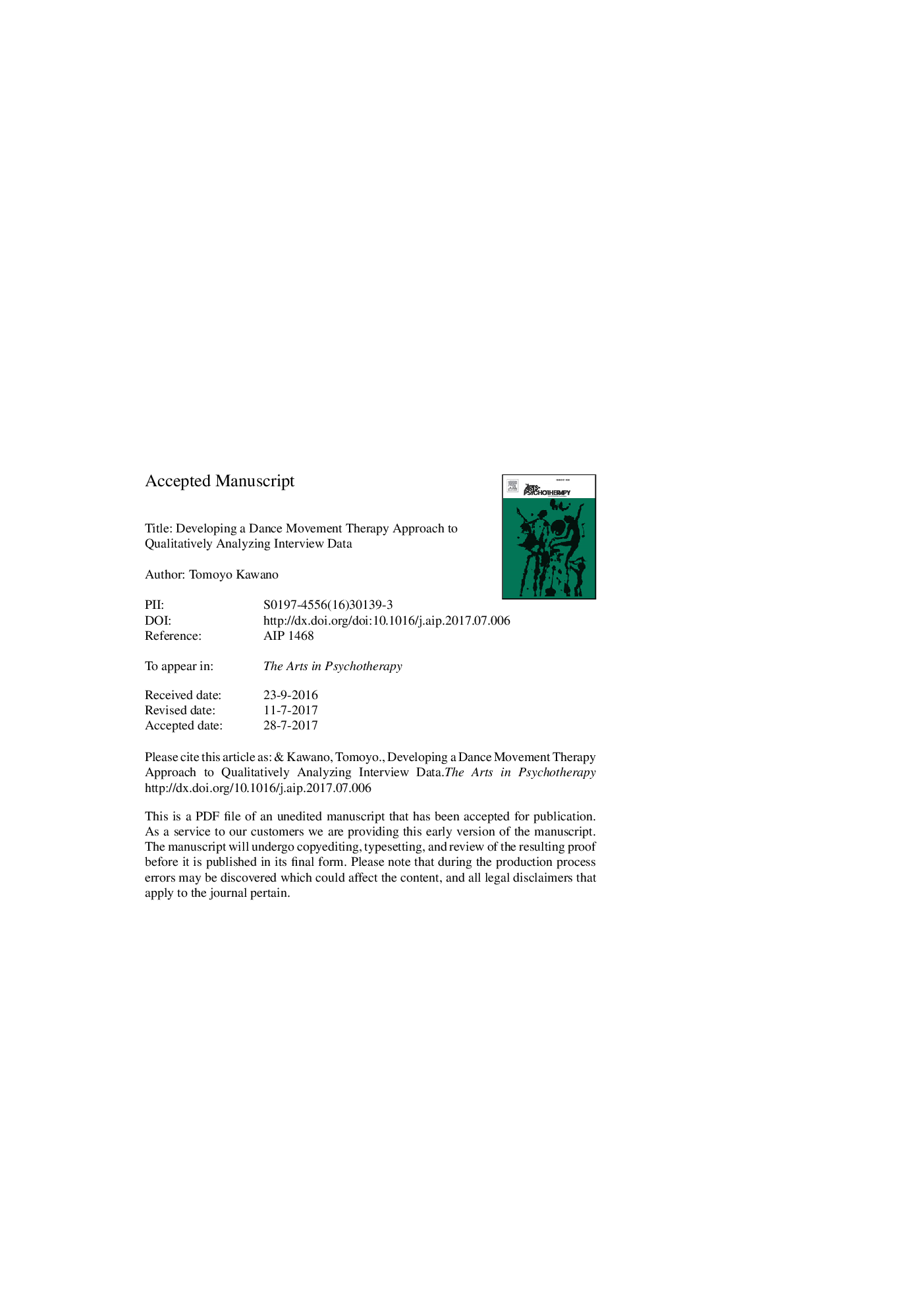| Article ID | Journal | Published Year | Pages | File Type |
|---|---|---|---|---|
| 4935724 | The Arts in Psychotherapy | 2017 | 46 Pages |
Abstract
The objective of the study was to develop a model for an embodied-artistic approach to qualitatively analyzing interview data that could contribute to an enhanced narrative account and/or offer an alternate perspective. A new model was formulated by adapting and/or critically applying a combination of previously developed analytical frameworks. Dance/movement therapy (DMT) skills that encompass ways of listening through an embodied, empathic, aesthetic manner; and a movement observation and assessment tool, Laban Movement Analysis (LMA) were at the core of this explicatory process. The researcher's movement preferences were identified in the preparatory phase with a certified movement analyst (CMA). Interviews were conducted with two subsets of dance/movement therapists (N = 6) to: (a) develop the approach in the induction phase (n = 3); and (b) test the approach in the validation phase (n = 3). In the induction phase, the video footage of the dances was shared with a CMA and the participants for peer review, and the approach was revised. In the validation phase, the revised model was tested with a different subset of dance/movement therapists. The findings that are shared pertain to the evaluation of the method rather than the outcome of the study that was conducted concurrently as part of explicating the method.
Keywords
Related Topics
Health Sciences
Medicine and Dentistry
Psychiatry and Mental Health
Authors
Tomoyo Kawano,
